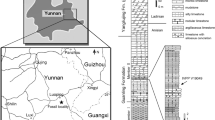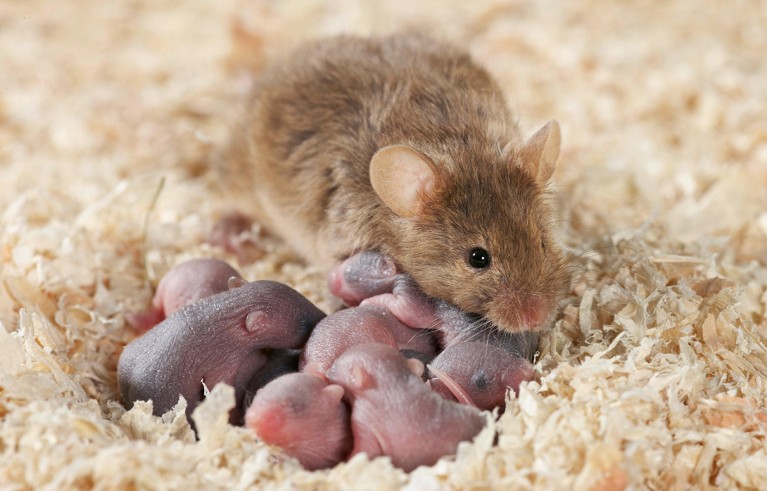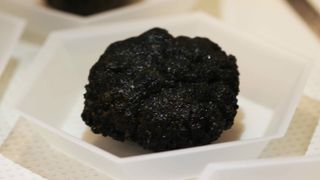-
Effort to ‘Trump-proof’ US science grows, but will it succeed?

Former health official Anthony Fauci (left) had a strained relationship with then-president Donald Trump throughout the COVID-19 pandemic.Credit: Chip Somodevilla/Getty Earlier this month, the union representing thousands of scientists and engineers at the US Environmental Protection Agency (EPA) signed a new contract that includes protections for government workers who stand up for scientific integrity. A…
-
The first deep-snouted tyrannosaur from Upper Cretaceous Ganzhou City of southeastern China

Abstract Tyrannosaurids were the most derived group of Tyrannosauroidea and are characterized by having two body plans: gracile, long-snouted and robust, deep-snouted skulls. Both groups lived sympatrically in central Asia. Here, we report a new deep-snouted tyrannosaurid, Asiatyrannus xui gen. et sp. nov., from the Upper Cretaceous of Ganzhou City, southeastern China, which has produced…
-
These brain cells help days-old mice to bond with mum

Specific neurons in the brains of infant mice are active when they interact with their mother.Credit: O. Giel/Juniors Bildarchiv GmbH via Alamy Researchers have identified neurons in the brains of baby mice that enable them to form a unique, strong bond with their mother in the first few days of life. Stimulating these neurons in…
-
Science must protect thinking time in a world of instant communication

Digital devices are proliferating but don’t always have the positive effect on productivity researchers might hope.Credit: Getty Video calls. Instant messaging. Voice calls. E-mails. Social media. Smartphones. Tablets. Laptops. Desktops. More digital devices equals less time to concentrate and to think. The negative effects of this on researchers are tackled by computer scientist Cal Newport…
-
Tackling resistance to change

The sustainability community is increasingly calling for transformation, but action to transform is too slow. Nature Sustainability and the Commonwealth Scientific and Industrial Research Organisation have convened an expert panel to address the issue and recommend a way forward. In January 2023, when we celebrated the fifth anniversary of Nature Sustainability1, we promised our readers…
-
A perspective on brain-age estimation and its clinical promise

Abstract Brain-age estimation has gained increased attention in the neuroscientific community owing to its potential use as a biomarker of brain health. The difference between estimated and chronological age based on neuroimaging data enables a unique perspective on brain development and aging, with multiple open questions still remaining in the brain-age research field. This Perspective…
-
Heaviest element yet within reach after major breakthrough

Researchers have demonstrated a new way to make superheavy elements, offering a method to create element 120 — which would be the heaviest element ever made. Scientists at the Lawrence Berkeley National Laboratory in Berkeley, California, announced today that they have for the first time used a beam of titanium to make a known superheavy…
-
Discovery of ‘dark oxygen’ from deep-sea metal lumps could trigger rethink of origins of life

Potato-size metallic nodules strewn across the Pacific Ocean seafloor produce oxygen in complete darkness and without any help from living organisms, new research reveals. The discovery of this deep-sea oxygen, dubbed “dark oxygen,” is the first time scientists have ever observed oxygen being generated without the involvement of organisms and challenges what we know about…
-
What Kamala Harris’s historic bid for the US presidency means for science

President Biden has endorsed Vice President Kamala Harris to take his place in the November election.Credit: Andrew Harnik/Getty After US president Joe Biden ended his re-election campaign on Sunday, he and other senior Democratic politicians threw their support behind vice-president Kamala Harris. Although the situation could change between now and the official selection of the…
-
Evidence of dark oxygen production at the abyssal seafloor

Abstract Deep-seafloor organisms consume oxygen, which can be measured by in situ benthic chamber experiments. Here we report such experiments at the polymetallic nodule-covered abyssal seafloor in the Pacific Ocean in which oxygen increased over two days to more than three times the background concentration, which from ex situ incubations we attribute to the polymetallic…